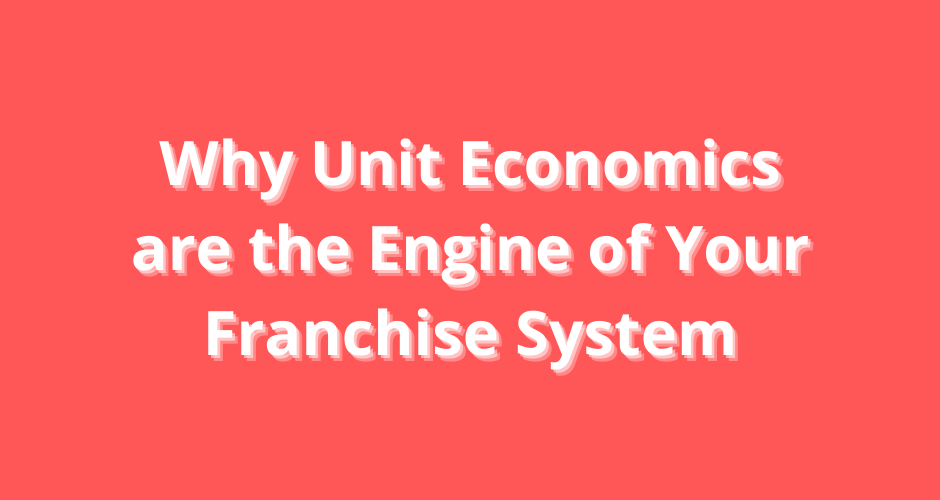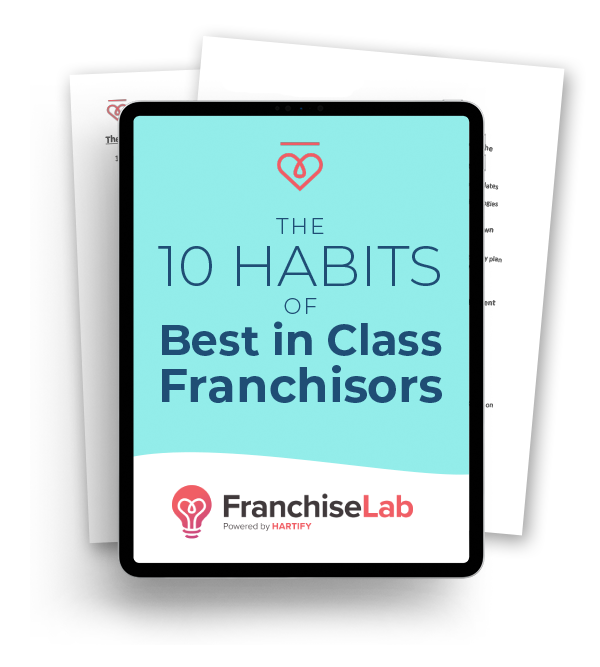
At the FranchiseLab, we do quite a bit of work in the franchise start-up space, and because we have launched so many systems (of our own and for our clients), we have developed a methodical process to help new franchisors build and launch a new franchise business successfully.
When a brand decides to build its franchise system, it is common practice to think that there are only two major steps to franchise: 1) Create a franchise agreement and 2) Develop an operations manual. Then, many businesses believe they are ready to franchise.
I wrote about the inability of many franchise systems in Canada to scale successfully in my blog post How Do I Franchise My Business (The Right Way)? Through our work, we have come to the realization that the root cause of why most franchisors never scale past 10 units in Canada comes down to a failure to launch well. They launch with their set of Operation manuals and their franchise disclosure documents. But franchising is FAR more complex than this. It requires much more preparation and thought to launch and build a franchise system that will successfully scale and grow.
As part of our mission to help empower emerging franchisors, we built The Hartify Method for Starting a New Franchise program, which builds and launches a brand’s franchise system the right way. It is much more comprehensive than just operation manuals and franchise agreements. It will teach you how to franchise a business.
Our Starting Point: The Unit Economics Deep Dive
When working with a franchise launch client, we always start with a deep dive into the unit economics of a single location. We start here because unit economics is the foundation for everything else in constructing a new franchise system. It is the STAR of the franchise launch show.
What do we mean by unit economics? When you boil it all down, it means: how much is it really going to cost me to get into this business, how long will it really take to get my money back, and how much money can I make? The answers to these questions hold the clue to how franchise-worthy the concept is, and who will be your future franchisees as you explore how to franchise your business.
As we model out a business, we also begin to define: When does break-even need to be achieved? How much do we need to spend and what do we need to do to get there? What is the exact cost structure to achieve it? When do I make my next hire(s)? What should my contribution margin be? What % of revenue should my rent be at the various scale-up stages? What should my profit % be at the various step-up levels in the business? What are the sources of business and what % breakdown in my sales should each line item be? How long will it take to get there? What is the customer acquisition cost, lifetime value of a client and retention rate? These are just some of the variables we begin to methodically model out before we jump into anything related to operations manuals or franchise agreements.
From here, we can begin to nail down the key franchisor metrics so you can operate and grow a successful franchise system: What is the scale-up/ramp-up ratio number we need to achieve? What is the franchise sale break-even rate? What is the royalty break-even rate?
If some of this sounds unfamiliar to you – it is to most. Most business owners are experts in their particular business but do not have any experience in how to franchise a business. That’s why we spend so much time here. Because the answers to these questions drive everything. And it is rare that we meet a group who really knows this stuff, inside and out, before they franchise.
Once the model is complete? Then we can begin to build on a number of categories because they are all dependent on having the unit economics data in hand:
The Franchisor Business ModelThe Disclosure and Franchise Agreements
Now, and only now, can we truly begin to define the franchise business model. How do we maximize the franchisor’s profit and maximize the franchisee’s profit? It is this fine line that we have honed for years to define the key parts of the business model such as royalties, franchise fees, tech and marketing fees, territory sizes, etc. And it makes a world of a difference down the line, between running a highly profitable operation, or one that just gets by.
The Disclosure and Franchise Agreements
Now we can take the business model attributes and begin to create these documents, and importantly how we ensure compliance around the standards and metrics that will make both the brand and the franchisee successful.
The Ideal Franchise Partner
Not every Franchise Partner is looking for, or can afford, the same thing in terms of start-up costs, profitability, speed to break even, cash flow, and return on investment time horizon. A franchisee who makes $100k per year with a lower investment is much different than a zee who will make $300k per year with a higher investment. We go deep into persona building when we tackle franchise lead generation, but these are important factors that form the basis for the persona you will be targeting.
The Onboarding Process
The metrics and numbers will define the franchisee launch and onboarding process. Franchisors are often surprised at this, until we explain it. Your entire onboarding process needs to be filtered through one lens: how do we launch every franchisee as successfully as humanly possible? And the metrics will define this number (what we often refer to as the “Magic Number”). Once we know this number, then we can build everything according to suit, from the day they sign the franchise agreement to the day they launch their location.
Our Start-Up (and ongoing) Marketing Systems
One of the most important parts of starting a franchise business (to me, it IS the most important) is setting up the Opening Marketing program. We have the magic number to achieve success once we open the doors, now how do we execute on this? What are the levers to pull to empower our franchisees to achieve this? What kind of pre-sales process do we need? The unit economic model will define everything from the amount of money spent to the timing of the entire marketing process to the lead generation tactics and strategies to get a new location up and running.
With the unit economic model out of the way, we can now address the franchise sales process. If the numbers for the existing corporate units are solid, we can use these to help with sales, even before franchising begins, which is a HUGE help in selling your first 10 franchises.
What if the corporate locations don’t show good numbers? Well, then we know what inputs and systems we need to overhaul and nail before the franchise business launch.
The Coaching and Support System
Once a franchisee is up and running, you will need a coaching system that will help drive performance. Again, this all comes from the business model. What are we coaching on? How do we structure the support program? How do we ensure our partners focus on the right things at the right time? And what are the benchmarks we want to help coach our franchise partners to achieve?
All of this stems from our FranchiseLab financial modeling. In fact, this is SO important to the success of a franchise system (and lacking in so many of the systems we see) that we’ve incorporated this into our franchise sales and franchise coaching products. Yes, we might help build your franchise sales system and strategy, but we will also dive deep into your metrics and business model so that we can fully understand what you are selling and help make adjustments. Honestly, we’ve probably had the most impact on our clients here to help them franchise their business.
To learn how to start your new franchise business from one of North America’s franchise experts, learn about The Hartify Method for Starting a New Franchise here.
After starting multiple franchise businesses, building and running multiple franchise brands, spending 15 years immersing ourselves into all things franchising, learning how to build a world-class organization, and of course, answering the question “how do I franchise my business” at least 150 times, we have compiled our learnings into our “Top 10 Habits of Best in Class Franchisors.” Free download below.


